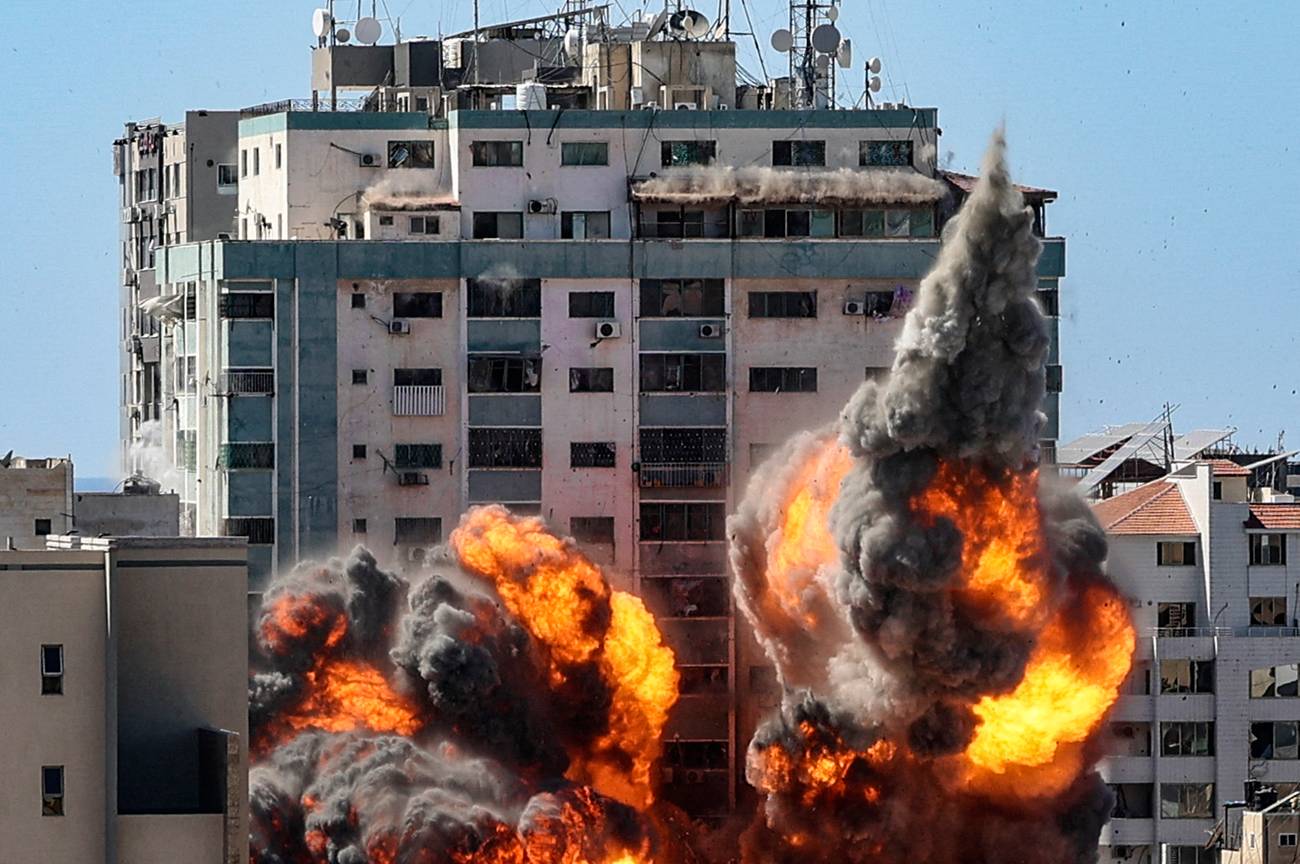Let’s Talk About Reporting in War Zones
The Associated Press claims it never knowingly shared a building with Hamas in Gaza. Its own correspondents—and former Obama administration officials—know better.



Over the weekend, the Israel Defense Forces demolished a building in Gaza that the Associated Press had shared with intelligence services of the Palestinian terror group Hamas. All of the AP reporters had been advised by the IDF to evacuate the building well before the strike, but that didn’t stop a flood of righteous indignation after the bombing. “AP’s bureau has been in this building for 15 years,” the wire service’s head, Gary Pruitt, said in a statement. “We have had no indication Hamas was in the building or active in the building. This is something we actively check to the best of our ability. We would never knowingly put our journalists at risk.”
This is dishonest: The AP reporters certainly knew they had Hamas neighbors. In fact, Tommy Vietor, former spokesperson for the National Security Council under President Barack Obama, even said as much on Saturday. “I talked to someone who *used* to work out of that building periodically who said he believed there may have been Hamas offices there,” Vietor tweeted. In other words, anyone who worked in the building on a regular basis understood that they likely shared an address with the Islamic Resistance Movement. Vietor also acknowledged on Twitter that terror groups “purposefully co-locate operations with civilians. But that is not a new problem.” Terror groups use human shields, and the press apparently volunteers to shield them.
Here’s the thing: There’s nothing surprising about Western press organizations making arrangements with terror regimes. It happens all the time in the Middle East. CNN refrained from reporting on Saddam Hussein’s atrocities in Iraq in order to keep its office in Baghdad open. The New York Times famously led a tour group to the Islamic Republic of Iran.
This situation is even more overt and obvious in Gaza. The only reason a press outfit like the AP has to open a bureau there is to cover Hamas, but it’s never been interested in reporting on how the group stores missiles in homes, schools, and hospitals, or on how little of the money it receives from Tehran goes to building civilian infrastructure or responsible governance. That’s because the only story Hamas wants coming out of Gaza is about the fundamental evil of the Zionist entity. Through direct threats as well as fixers and minders appointed to steer journalists in the right direction, Hamas lets every press outfit and journalist in Gaza know that if they do not understand this fundamental angle, they are not welcome in Gaza. A reporter’s life may even depend on understanding those red lines.
Tablet contributor and former AP Jerusalem bureau correspondent Matti Friedman explained the situation in a 2014 Atlantic essay: “I was informed by the bureau’s senior editors that our Palestinian reporter in Gaza couldn’t possibly provide critical coverage of Hamas because doing so would put him in danger.” In this context, sharing building space with Hamas is like a pledge of good faith: We understand your terms, we mean you no harm, and to show that we will continue to abide by your rules, we will cement our relationship by living together as neighbors to share your triumphs and endure your trials.
Why would Western journalists agree to be shepherded by a terror organization so driven by Jew-hatred that it hides behind innocent people and sees Palestinian deaths caused by its own rocket misfires as acceptable collateral damage? For the story, of course. Since Israel’s 2005 withdrawal from Gaza and the kidnapping of IDF Corporal Gilad Shalit in 2006—roughly when the AP started renting space in the building it shared with Hamas—that story has been war with Israel, including several sizable operations that Jerusalem has labeled Cast Lead (2009), Pillar of Cloud (2012), Protective Edge (2014), and now the current engagement. Since Western journalists cannot write critically of Hamas for fear of expulsion or even harm, their war reporting is usually nothing other than an amplification of Hamas propaganda. They are in Gaza only to relay to the rest of the world an Iranian-backed terror organization’s messaging about its ongoing war with the Jewish state.
Still, there’s something noteworthy about the latest AP story: If a former Obama administration official without a Middle East portfolio knew the AP shared a building with Hamas intelligence services, then the Obama alumni who now staff the Biden administration also know it. That’s embarrassing not only for Secretary of State Antony Blinken, who phoned the head of the AP over the weekend, but also for President Joe Biden, who called Prime Minister Benjamin Netanyahu to complain about civilian casualties after the building was leveled. It gives the impression that the Biden team is coordinating with media operatives to lay down cover for a terror regime, which is probably why the Israeli government leaked to the press that it briefed Biden and his colleagues on the “smoking gun” evidence showing that the AP and Hamas worked out of the same building.
Thus, when Pruitt says that “the world will know less about what is happening in Gaza because of what happened today,” he is being disingenuous. It only means that one of Hamas’ useful idiots in the American press was exposed.
Lee Smith is the author of The Permanent Coup: How Enemies Foreign and Domestic Targeted the American President (2020).